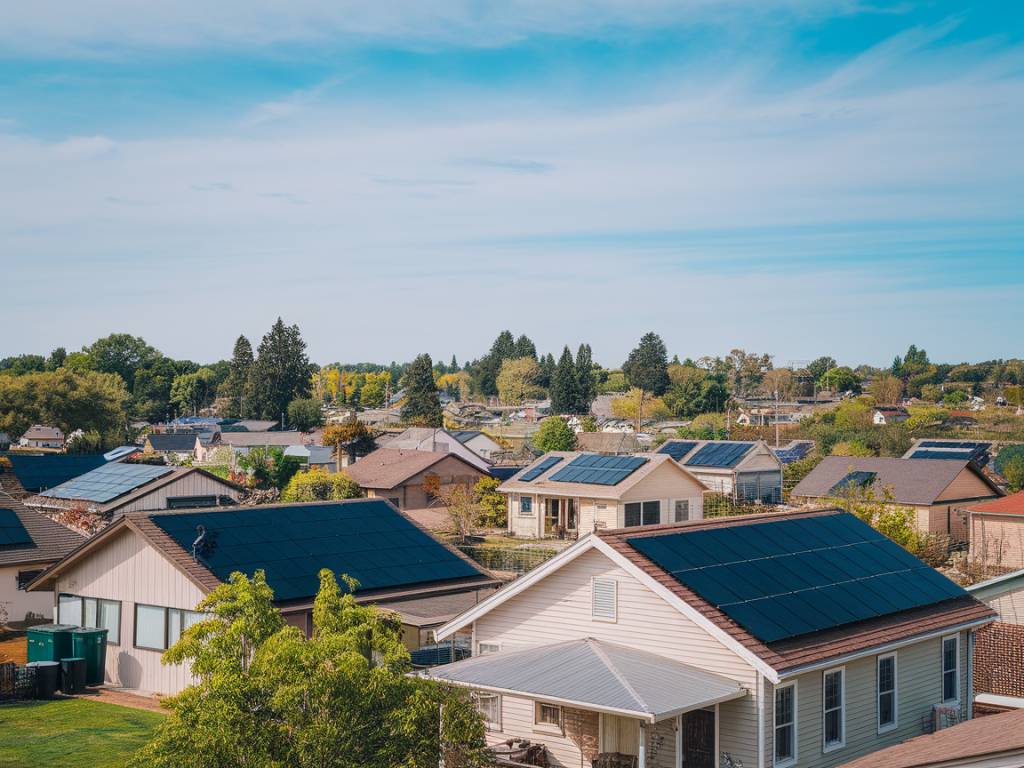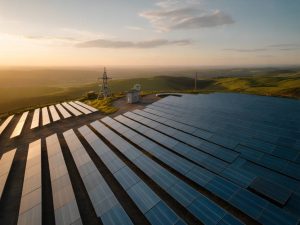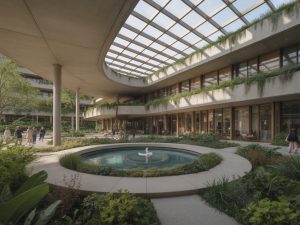The Growth of Solar Power in Suburban Communities
Picture this: a serene suburban neighborhood with single-family homes lined up neatly along quiet streets. The children are riding bikes, the lawns are brightly green, and the rooftops? Well, they’re gleaming with solar panels. What once seemed futuristic is now a reality, as solar power takes hold in suburban areas across the globe. But why is solar energy booming in these neighborhoods, and what does it mean for homeowners and the planet? Let’s dive into this transformative trend.
Why Suburban Areas Are Embracing Solar Power
Suburban neighborhoods are uniquely positioned to adopt solar power. For starters, unlike urban areas crowded with towering high-rises, suburban homes tend to feature large, sloped roofs that provide ample space for solar panels to capture sunlight. Plus, residents in these areas often own their properties outright, giving them more flexibility to invest in renewable energy technologies.
But the catalysts don’t stop there. Over the past decade, the costs of solar panel installation have plummeted, making solar power more accessible to middle-class households. Moreover, federal and state incentives, like tax credits and rebates, have sweetened the deal for families considering the switch. Factor in the increasing desire for energy independence and the fight against rising utility costs, and it’s easy to see why suburban homeowners are becoming champions of solar energy.
A Win-Win: Financial and Environmental Perks
So, why are so many families turning to solar power? The benefits are twofold: financial savings and environmental stewardship. Let’s start with the finances. Switching to solar allows homeowners to generate their own electricity, effectively slashing their monthly utility bills. In fact, according to the Solar Energy Industries Association (SEIA), households with a solar installation save an average of $1,000 per year on electricity bills.
On top of that, some states offer net metering programs, which allow homeowners to sell excess electricity generated by their solar panels back to the grid. Imagine your electric meter spinning backward—yes, it’s possible!
From an environmental perspective, the shift to solar helps reduce carbon footprints. A typical residential solar panel system can offset about three to four tons of carbon dioxide annually, equivalent to planting over 100 trees a year. For environmentally conscious suburbanites, going solar represents a meaningful step toward combating climate change.
Technology Driving Solar Accessibility
The rise of solar energy in suburban areas wouldn’t be possible without advancements in green technology. Solar panels are now more efficient, durable, and aesthetically pleasing, addressing previous objections from homeowners who worried about their curb appeal. Have you seen those sleek black panels that almost blend in with rooftops? Today’s solar tech is as stylish as it is functional.
Additionally, innovations like solar storage batteries, such as Tesla’s Powerwall, allow homeowners to store energy for cloudy days or nighttime use. This ensures a reliable power supply even when the sun isn’t shining. Plus, emerging technologies like bifacial solar panels (which capture sunlight on both sides of the panel) promise to make future systems even more efficient.
Another game-changer is the rise of solar leasing and power purchase agreements (PPAs). These options let homeowners install solar panels with little to no upfront costs, paying instead through monthly installments or a percentage of the energy saved. This shift has opened the door for families who might not have been able to afford solar systems otherwise.
Breaking Barriers: Overcoming Challenges in Suburban Solar Adoption
Switching to solar is not without its hurdles. One common obstacle is homeowners’ association (HOA) regulations, which in some communities place restrictions on roof alterations. However, many states have enacted “solar rights” laws that limit HOAs’ ability to block solar installations, giving homeowners more freedom to pursue renewable energy.
Another consideration is the initial investment cost. Although prices have dropped significantly, a typical residential solar system can still cost between $15,000 and $25,000 before incentives. To address this, some local governments and nonprofit organizations offer financing options, low-interest loans, or grants to help offset installation expenses.
Lastly, there’s the human factor: awareness. While solar energy is gaining traction, some homeowners remain unaware of the financial incentives and environmental benefits available to them. Effective education campaigns and word-of-mouth advocacy from neighbors can help bridge this gap.
Real Stories from the Suburbs
Let’s put a human face on this trend. Take the Smith family from a quiet neighborhood in Austin, Texas, for example. They decided to install rooftop solar panels last year and have since reduced their monthly electricity bills by 60%. “The savings are incredible, but what excites us more is knowing our kids will grow up in a home that runs on renewable energy,” says Mr. Smith.
Or consider Emily, a retiree in Florida who partnered with her neighbors to take advantage of bulk discounts on solar installation. Her neighborhood now boasts over 20 solarized homes, and as a result, their collective electricity consumption has dropped significantly. Stories like these demonstrate the power of community when it comes to adopting greener solutions.
The Ripple Effect: Solar Power’s Broader Impact
As more suburban neighborhoods embrace solar power, the ripple effects are profound. This grassroots adoption helps accelerate the energy transition, pushing utilities to invest more heavily in renewables. It also inspires neighboring communities to follow suit, creating a snowball effect of solar adoption.
From an economic perspective, the popularity of rooftop solar is helping to create green jobs, from installers to maintenance technicians. According to the International Renewable Energy Agency (IRENA), the solar industry has already created millions of jobs globally, and that number is expected to increase as the transition to clean energy gathers momentum.
Where Do We Go from Here?
With its blend of financial savings, environmental benefits, and technological innovation, it’s clear why solar power is rising in suburban neighborhoods. But the question remains: how can we ensure this movement continues to grow?
For starters, policymakers can do more to incentivize renewable energy adoption through subsidies and education campaigns. Homeowners can take the first step by researching solar options in their area and seeking advice from reputable installers. And for those already embracing solar energy? Share your story—the more people see the tangible benefits, the faster we’ll transition to a cleaner, greener world.
The sun is shining on suburbia, and the era of rooftop solar is just beginning. The future isn’t just bright; it’s solar-powered.






More Stories
L’essor des communautés énergétiques locales : vers une nouvelle gouvernance citoyenne de l’énergie
Powering Data Centers Sustainably: The Role of Renewable Energy in the Digital Age
Integrating Biophilic Design with Green Technology: A New Paradigm for Sustainable Living